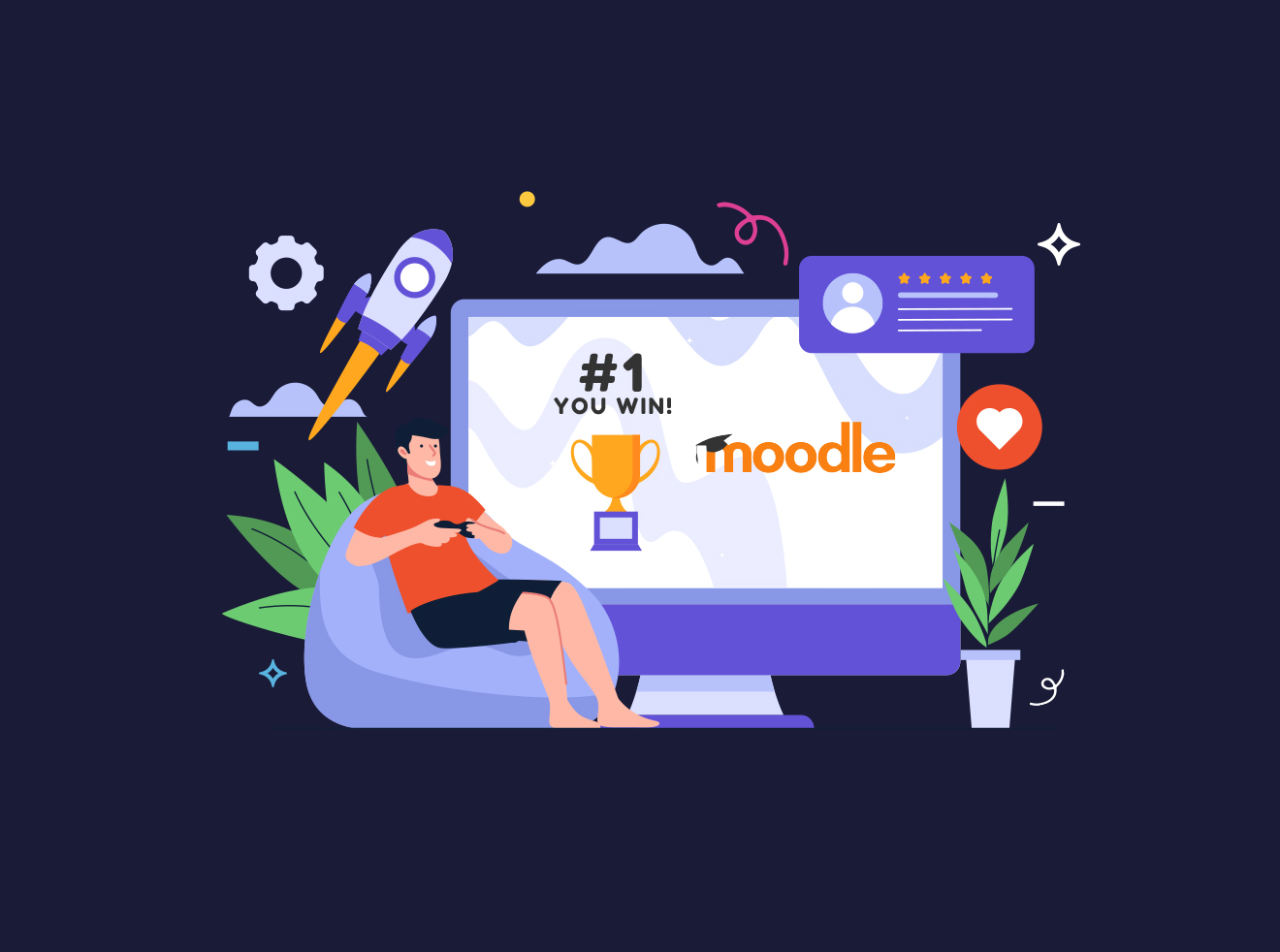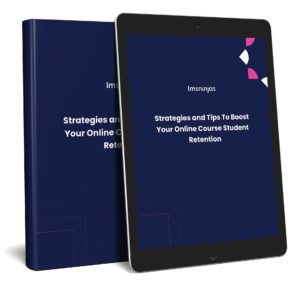Students with hectic schedules still have the option to pursue higher education by enrolling in online certification programs. Students who choose online education have the luxury of working on their assignments whenever it is most convenient.
Recent research shows that the number of unemployed and working adults opting for certifications is rising while the percentage of students registering for traditional college programs is falling. This is because certificates are more relevant in the industry. After all, they are tailored to a certain role while requiring less time and money.
A ‘data science’ certificate can show an individual how to make sense of massive data, evaluate that data to serve customers better, and create data models to influence a company’s future products. It is important to note that certifications are usually job-specific.
Creating certification programs is expensive and time-consuming to develop, regardless of whether they are intended for internal or external use.
Nowadays, most learning management systems (LMS) already include a basic certificate feature, making it simple to implement one in your online course. Using a Learning Management System to develop a course that awards official credentials like diplomas, CEUs, and so on is now more complex.
Here is what the process looks like:
1. Determine Requirements And Regulations
In the same way that degree programs need approval from the necessary departments before they can be publicly announced, accepted applications for, or filled with students, so must certificate programs.
Before getting started with an LMS for Online Certification, it’s vital to double-check the local and industry-specific rules and standards for granting valid certifications.
For continuing education units (CEUs), your online course needs to be sanctioned by relevant accrediting authorities. Your course’s structure and the material will be evaluated. Ensure that the LMS you use follows all applicable standards and rules.
Understand that online certificate programs are not degree programs; this distinction is critical for setting reasonable goals and expectations. Certificates are awarded to graduates of these programs rather than diplomas or academic degrees such as Associate, Bachelor, and Master.
2. Find An LMS That Will Support Online Certification
When you have a clearer idea of what you need, it will be easier to decide on a suitable LMS. Several learning management system plugins, including LearnDash, TutorLMS, and LifterLMS, are available for WordPress. Alternatives include popular platforms like Canvas and Moodle. However, not all of them endorse the distribution of formal credentials.
Make sure you pick a plugin that can give out completion certificates. Try to discover what resources a comparable institution, group, or initiative is utilizing if one exists.
Programs used for online compliance training sessions and certifications rely heavily on the certification function. Both classroom teachers and organizational leaders need to accurately gauge their students’ proficiency levels and pinpoint areas where they may improve. With this enhancement, audit logs from your LMS can be used for verification purposes.
LMS also needs to be able to properly monitor students, assess results, and deliver a challenging course load.
Companies can meet their unique training needs with the help of a tailor-made learning management system.
To what extent personalization should be allowed is a complex question. Branding features like a logo, corporate colors, and a distinctive URL can help, but it’s up to you to decide if that’s all you need.
Here is how to choose an LMS in a few steps:
Highlight your program’s requirements
Knowing the demographics of your target learners will allow you to rule out some learning management systems (LMSs). If, for instance, you want to sell training to outside parties on a large scale, your LMS has to be compatible with online stores and payment processors.
More so, in this case, LMS certification capability is essential.
Identify the technical specifications, progress reports, asynchronous and synchronous training, and enrollment options, to mention a few.
Additional features
To make your online course efficient and engaging, look for additional features like platform integrations, customization, customer portals, time trackers, and, most importantly, certification builder.
Even if a program is not officially recognized, it is vital to provide learners with certificates of completion. The system should offer in-built LMS certification and allow you to upload them from other sources.
3. Create Course Structure, and Content
Create and manage course materials, including lessons, assignments, and quizzes, with the help of an LMS. Multimedia, such as video, music, and graphics, can enrich the student’s learning process.
Pick The Right Topic
Your online program’s content should be something you’re familiar with or interested in learning more about. It would help if you felt deeply about the topic either way.
It’s important to reflect on your strengths and the areas where people most often seek your counsel. There is a strong correlation between those sorts of themes and the success of online courses.
On the other hand, you can ask your target audience what they want to study and then provide them with everything there is to know about that topic.
Create A Course Outline
This is the time to create your online course syllabus. Make a list of all the topics you intend to cover in your online classes. Separate each lesson into smaller chunks based on the primary points you wish to emphasize. Learn more efficiently by following a logical progression that allows your thoughts to flow easily from one topic to the next.
Remember that teaching entails patiently leading one’s students through a concept. Set a goal for each class to make this clear in your syllabus.
Create The Content
You may have already compiled content related to the study scope if you possess professional experience.
You may save yourself a lot of time and get a head start on developing your online course by reusing content you have currently at hand.
With your structure and research completed, you can begin developing the course’s content. Most programs rely heavily on videos, but you can employ a combination of media kinds or stick to one.
4. Create Digital Certificates

When it comes to online education and training, nothing beats a certificate of completion. They add credibility and increase the content’s perceived worth. However, they serve as a final symbol of appreciation and success for your student during their time with your organization.
Create authentic certificates of completion for your students using the features of your learning management system plugin. Certifications can be generated automatically and checked for conformity with official guidelines and requirements. Consider the vital information that must be included, like signatures, unique identifiers, and dates.
From time to time, you may wish to profit from or sell these certifications.
Using an LMS, you may customize a certificate for your online program to match your brand’s aesthetic, determine when to award it to students, validate and verify results and be done with it.
5. Make Your Site Secure
Set up a safe method of keeping track of students’ records and credentials. Safekeeping measures may include but are not limited to password protection, encrypted files, and routine data backups.
Ensure you have the copyrights for your course before making it available to the public. Copyrights ensure authors’ financial and legal security in their works. Every component of the course, including photos, videos, PDFs, infographics, and text, can be protected by copyright.
Learners should be required to use a password to access their courses. Give them the option of using alphanumeric characters in their passwords. The likelihood of having your courses stolen by hackers is diminished by taking this measure.
Ensure your school will allow the usage of any software you plan to implement in your online course by confirming that it has been validated or recognized by the Ministry of Education and Higher Education.
Be wary of utilizing non-educational technologies, such as editing or drawing programs, as they may lack the essential privacy settings which would safeguard your information.
Microsoft conducted a poll on the prevalence of malware in several industries in September 2020 and found that the education sector was hit hardest by the threat. Knowing that loopholes in such programs are a hacker’s paradise is good.
As such, it is incumbent upon you to ascertain the legitimacy of any additional software required to prepare the class or lecture and to employ only software recognized by the relevant authorities.
You should also avoid installing malware on your computer by accident by clicking on advertising online because some adware hides links to malicious websites within these advertisements.
6. Sell The Course
Depending on your goals and marketing strategy, you have four options for monetizing your online course.
Monetize Content
The videos in your online course should be available for rent or purchase separately. If a user purchases a video lesson, they will have access to the video indefinitely via streaming, allowing them to review the material whenever they like. Select whether or not to provide the video for download or streaming only.
Alternatively you can offer your course content for free and sell the actual certificates instead.
Subscription
When subscribers pay for a channel, they get access to all of that channel’s premium content. You can divide your website’s content into regular and premium sections using a barrier in the form of subscriptions.
Paid plans
Allow your learners to pay in full at the beginning or set up a payment arrangement with manageable monthly installments. You have complete freedom over the plan’s structure, scope, duration, and more. Exhibit a variety of plans for customers to peruse and buy on your website.
You can think of Paid Plans since they restrict access to your site’s content until the user pays and becomes logged into the members-only section.
One-time lessons
Students can also receive live, one-on-one instruction from you in addition to the course content. This setup encourages students to interact with you on their terms so that they can study at their own pace and level of understanding.
Through web-based booking tools, students of your course can quickly and conveniently reserve a place in your class. Pick whether you want to charge extra for this service or include a set number of private lessons in the overall cost of the course.
In addition to your paid courses, you should provide a brief, free taster of the full course. Students will be more likely to enroll in the premium courses if they are given a taste of what they may expect. You can provide a free preview of each session or make the first lesson available without charging anything.
7. Promote The Course
Like any other business, your online course has a dedicated customer base that frequents a specific social media site or app. With online marketing, you can create a strong foundation for your brand, expand it to more people, and keep it going strong across all the right online platforms.
Businesses are utilizing digital marketing by spending extensively on it as they recognize the significance of long-term marketing and advertising. There is more to digital marketing than just raising brand awareness and placing ads in specific places.
Many people and businesses today understand the importance of this and are making use of these channels to reach their target demographics.
The same holds when trying to brainstorm ways to advertise digital courses.
Use Social Media
Regarding online marketing, social media is where it’s at. Regardless of the medium, your program’s debut should begin well before its release, with tidbits of information that will hook the audience. Build your social media presence by providing valuable content that compels your ideal customers to purchase. Sometimes you need to find someone else to provide that material.
Successful social media promotion of online courses requires regular posting. Your readers will develop a routine of checking back frequently in anticipation of new posts. As soon as your online course launches, you’ll have a dedicated following of students waiting for it.
Developing a following on social media platforms like Facebook or Instagram takes little time and costs nothing. Once people join your group and begin investigating it, they will inevitably tell their friends and family about your program.
Make Use Of Keywords
Whether you’re preparing to introduce a new course or promoting an existing one, you should put yourself in the position of your target audience and consider the search phrases they would use to locate your course.
It’s easy to conduct a keyword search. The first step is to use Google to find phrases that best characterize your intended direction. Keywords that potential students might use to find your course online.
Determine which keywords will bring in the most traffic, then use that information to produce in-depth articles for your site. This is crucial since it will help people locate your content and, hopefully, buy your course.
Use keywords in the text of your blogs and in the alt text of images and videos so that search engines can find them.
Don’t forget to include internal links while making SEO-friendly content. In an ideal world, visitors would spend considerable time exploring your site before clicking away. Your goal should be to provide any information that a possible student would require.
As for anything else, that’s about all there is to it. Using search engine optimization to market your course requires dynamic keyword analysis and application. If your information is useful to internet searchers, it will rise in the search engine results pages (SERPs).
Content creation that is both high-quality and timely is of paramount importance today. To be sure, off-site SEO practices like backlinking are still important, but in terms of “on-page” SEO, you need to market your course organically by using the proper keywords in your material.
We recommend using a plugin like Yoast SEO, which integrates with a content management system like WordPress to handle most of the groundwork for search engine optimization (SEO).
Offer Discounts
Discounting your online course does more than increase interest in it as a marketing strategy. Through this, you get an opportunity to generate substantial revenue.
It also creates an infrastructure for collecting testimonials, feedback, and suggestions.
The performance of your online program may hinge early on these crucial elements. Gaining experience in online course promotion won’t cost you anything but the time it takes to implement this tactic.
Incentives for customers to join up before launch when you can give discounts are a good idea. To assist in convincing skeptics, getting testimonials from students who registered during this period is helpful.
Get Reviews and Testimonials From Students
Most online consumers believe in evaluations written by strangers rather than the business being praised. Get your current students to provide reviews for your course on review sites like LinkedIn Learning.
Don’t assume that every feedback will be positive; use criticism to improve. Try to work out an agreeable response to any criticism. Quick action, an apology, and sympathetic words, together with a solution or compensation, can help.
In the end, the goal of all comments is to make the educational process more enjoyable for future students.
Use Paid Ads To Promote Your Course
One efficient method of promoting your course is through sponsored advertisements, the cost of which may vary depending on your financial means. A Facebook Ad that costs only ten dollars can significantly impact revenue. In addition to the advantages above, advertising your course on Google or Facebook might bring desired results.
The success of your paid advertising campaign will hinge on how carefully you investigate your chosen medium. Be sure your target demographic frequently uses the platform you’ve chosen.
Choosing an LMS for Online Certification
The expansion of online certification programs can be attributed to several factors, including technological progress, widespread internet access, and the need to update skills in light of the dynamic nature of the modern labor market.
With the average lifespan of a skill set decreasing about less than 3 years and tech evolving at a dizzying rate, online certifications are the most efficient ways to mass-train employees in cutting-edge hardware, software, and other emerging technologies.
With the right LMS certification tool, you should be able to create an online certification course that not only appeals to your audience but is also valuable for them. Our LMS experts can not only help you select the best platform to host your program, but also help you set it up.




